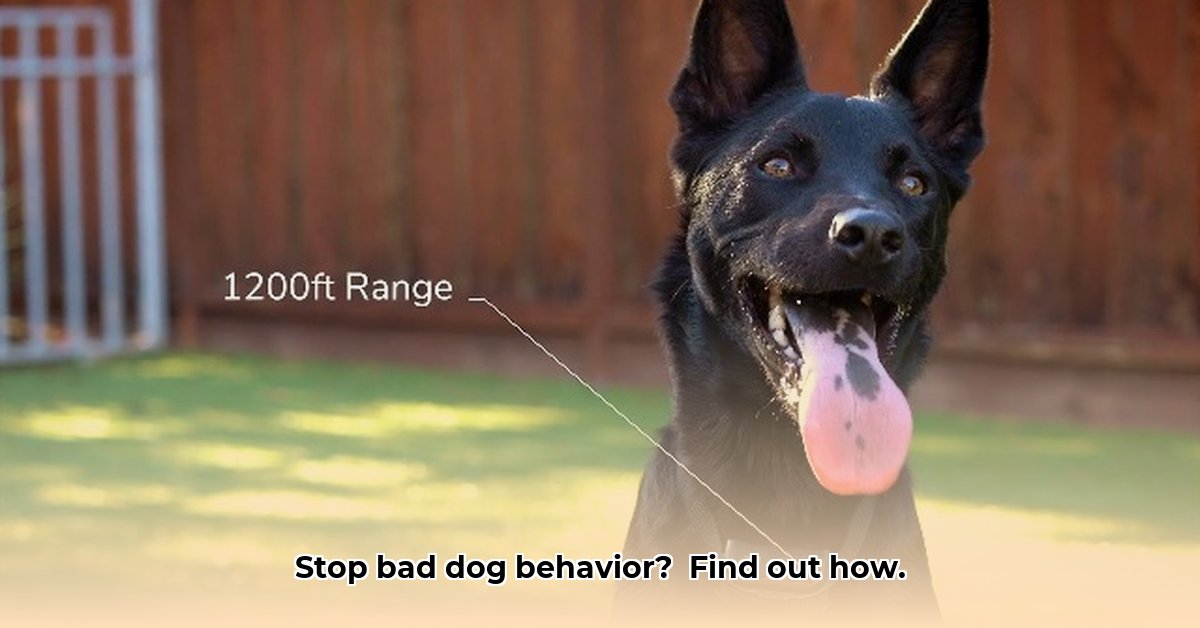
Understanding Shock Collars: A Balanced Perspective
Shock collars, also known as e-collars, deliver a brief electrical pulse to correct canine misbehavior. While their use is controversial, understanding their mechanics and responsible application is crucial for informed decision-making. This guide explores the facts, weighing the pros and cons, and outlining best practices. For alternative pet supplies, check out Tractor Supply alternatives.
How Shock Collars Work
These devices deliver a low-level electric shock, adjustable in intensity based on the dog's size and sensitivity. The goal is to create a negative association with unwanted behaviors, encouraging alternative actions. However, it's vital to remember this is only one component of a comprehensive training program.
Weighing the Pros and Cons
Shock collars, like any training method, present advantages and disadvantages. A balanced assessment is essential before considering their use.
| Potential Advantages | Potential Disadvantages |
|---|---|
| Quick corrections for specific behaviors. | Risk of causing pain or distress if misused. |
| Useful for dogs with hearing impairments. | Can damage the dog's trust and bond with its owner. |
| Wider range of control than voice-only training. | May lead to fear-based learning, rather than positive reinforcement. |
| Effective for some dogs in specific situations. | Ethical concerns regarding use and potential for abuse. |
| Convenient for addressing distant behavior issues. | Potential for collar malfunction. |
Choosing the Right Shock Collar at Tractor Supply
Selecting the appropriate collar requires careful consideration. Key factors include:
- Your Dog's Size and Temperament: Smaller breeds need gentler collars than larger ones; sensitive dogs require even more cautious approaches.
- Range and Features: Consider the distance needed for control and features like vibration or tone-only modes as alternatives to shock.
- Safety Features: Look for auto-shutoff mechanisms and durable, comfortable designs.
- Thorough Research: Read online reviews carefully, considering both positive and negative experiences. Don't rely solely on star ratings.
Responsible Use: A Humane Approach
Effective and ethical shock collar use necessitates a commitment to responsible training practices. Follow these steps:
Consult a Professional: Always consult a veterinarian or certified professional dog trainer before using a shock collar. They can assess suitability and create a comprehensive training plan.
Start Low: Begin with the lowest stimulation level, gradually increasing only if necessary. Monitor your dog's reaction closely, lowering the intensity if they exhibit stress or fear.
Positive Reinforcement is Crucial: Combine shock with positive reinforcement (praise, treats, rewarding good behavior) for optimal results and a strong bond.
Never Use as Punishment: Shock collars should correct behavior, never punish.
Consistent Monitoring: Supervise your dog while wearing the collar, regularly inspecting for damage and replacing worn parts.
Continuous Evaluation: Dog training is an iterative process. Continuously evaluate and adjust your strategies as needed.
The Ethical Debate: A Continuing Discussion
The use of shock collars remains contentious. While some find them effective, others express ethical concerns about animal welfare and the risk of causing unnecessary stress and pain. Many humane, positive reinforcement-based training methods exist which are often equally or more effective in the long run. Consider exploring these alternatives thoroughly before using a shock collar. Prioritize your dog's well-being above all else.
Additional Resources
For further information on responsible dog training and alternative methods, consult resources from reputable organizations such as the American Kennel Club (AKC) and the Association of Professional Dog Trainers (APDT).